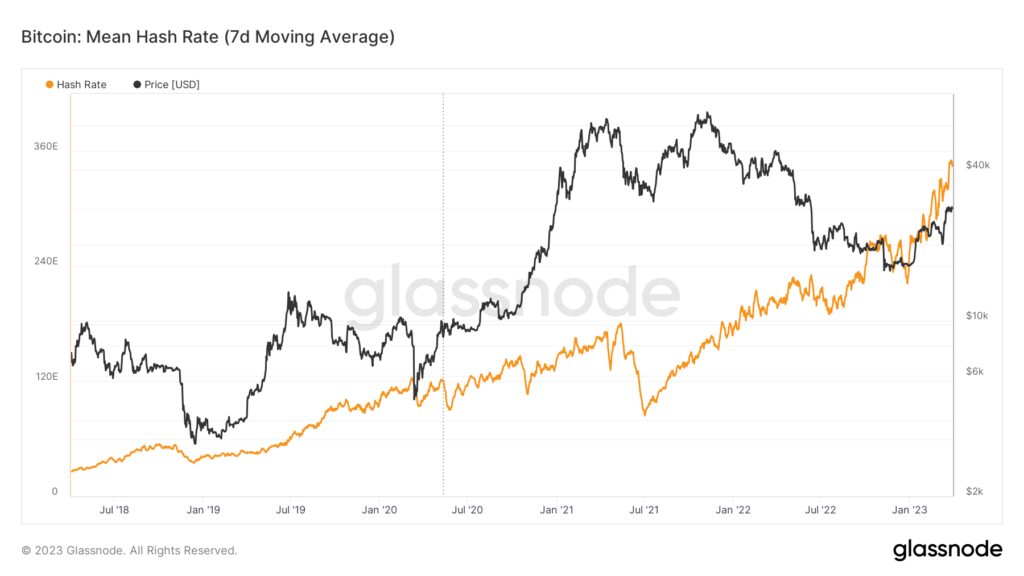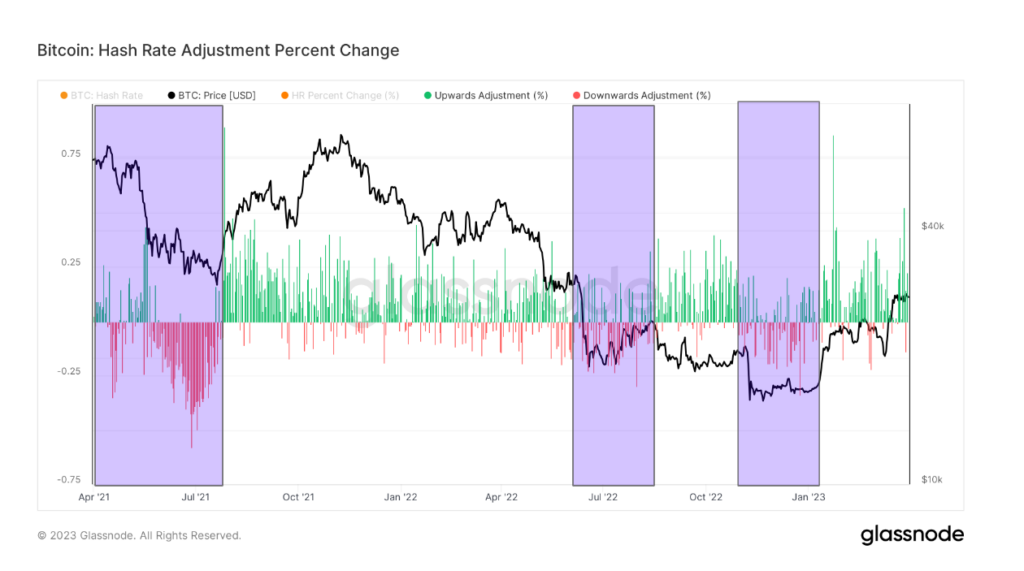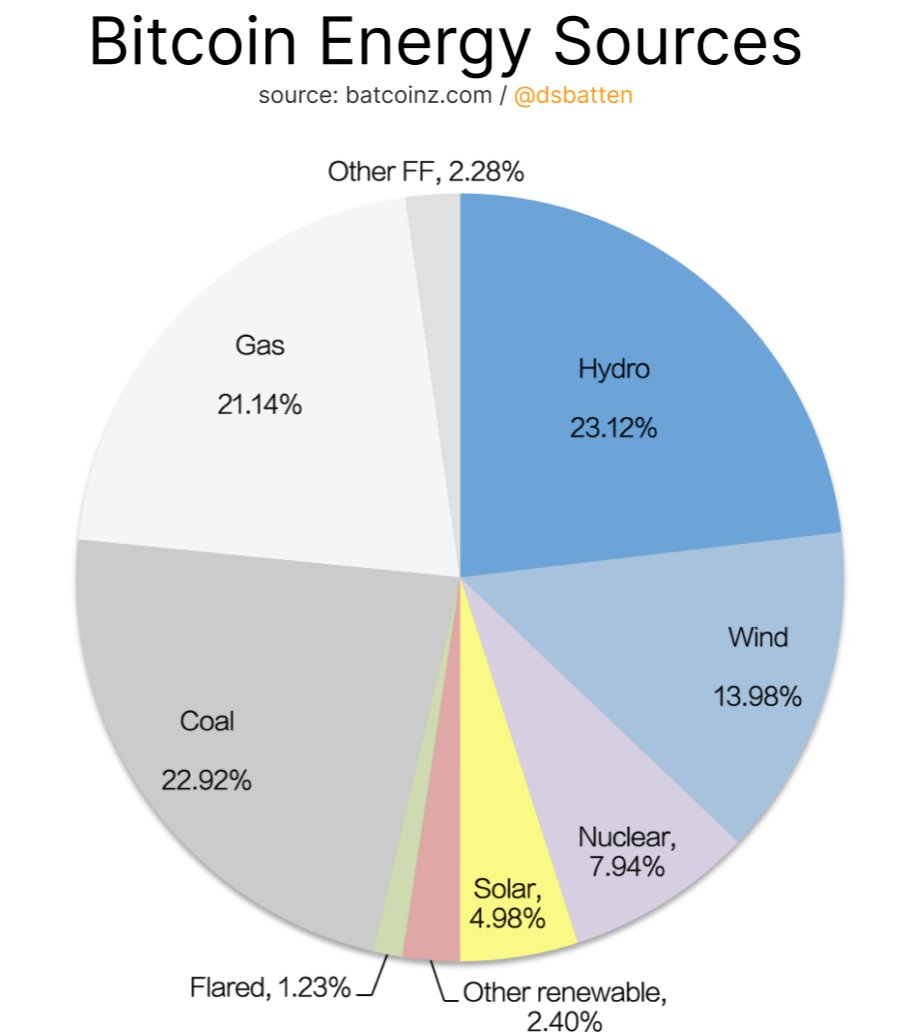Giriş
At the end of February, the Bitcoin network’s computing power reached its all-time high of 320 EH/s.

The milestone sparked a cross-industry conversation about the implications of such a high hash rate, with many outside of the crypto space fearing its impact on the environment.
And while most Bitcoin critics tend to overuse the term “environmental impact” without giving much depth to what it encompasses, there has always been legitimate concern over Bitcoin’s energy usage.
Bitcoin mining is an energy-intensive process. Bitcoin mining is a highly competitive and efficient industry, so miners will always seek the cheapest and most abundant energy sources. As the most affordable electricity comes from coal-powered plants, environmental activists are worried that an increase in Bitcoin’s hash rate comes with increased demand for the dirtiest energy sources.
Many of these critics rely on the controversial Cambridge Bitcoin Elektrik Tüketim Endeksi. The index uses various comparisons to illustrate just how much power Bitcoin consumes, often cherry-picking data and providing outdated information.
The global effort against Bitcoin’s energy consumption culminated last year when Greenpeace published a manifesto proposing a solution to Bitcoin’s proof-of-work algorithm. Called “Change the Code, Not the Climate,” the manifesto calls for Bitcoin to “switch” to a proof-of-stake consensus algorithm like Ethereum.
The governmental push to regulate the crypto industry further fueled protests against Bitcoin. Since the beginning of 2023, various organizations and groups have lobbied for tighter regulation and bans on Bitcoin mining.
In this report, CryptoSlate dives deep into the growth of Bitcoin’s hash rate to see how it’s becoming a net positive for the global fight to reduce pollution.
The consistent growth of Bitcoin’s hash rate
The processing power of the Bitcoin network has been growing consistently. However, the hash rate is prone to the same kind of volatility as Bitcoin’s price is, with large fluctuations often correlating with broader market movements.
Short-term corrections in hash rate correlate with drops in Bitcoin’s price. Similarly, sharp upward adjustments follow price increases.
Bitcoin’s March rally brought on the third most aggressive hash rate growth in the past five years.

Such a sharp spike in the hash rate prompted many to wonder where the growth came from.
While many suggested that it could result from nation-states launching mining operations, chances for that are minuscule. Instead, the sharp increase in hash rate is most likely a result of several compounding factors, with Bitcoin’s rising price being the leading one.
As Bitcoin’s price increases, so does the profitability of older, less efficient ASIC miners. As a result, mining operations with many retired ASICs have most likely returned the machines online to reap extra profits. Additionally, Bitmain’s newest Hydro ASIC miners are exponentially more efficient, offering over 250 TH/s per machine.
Chasing profitability also means tracking cheap and abundant power sources. With highly flexible and mobile infrastructure, miners can quickly change their location to benefit from lower electricity costs.
Hash rate volatility shows the stabilizing power of Bitcoin mining
This was the case with Riot Blockchain, one of Texas’s most significant Bitcoin mining operations.
The public mining company has established long-term fixed-rate power contracts with ERCOT, guaranteeing stable electricity prices throughout the year. This is standard practice for large industrial consumers such as manufacturing plants and data centers. However, unlike other large consumers, Bitcoin miners can shut their operations down fairly quickly and easily.
In times of significantly increased demand, miners can turn their machines off and enable more power in the grid. This happened with Riot in July 2022, when the company voluntarily kısıtlandığını its energy consumption during an unexpected heat wave that drove demand up. As a result, the company curtailed 11,717 MWh of energy, enough to power over 13,000 average homes in Texas for one month.
This earned Riot $9.5 million in power credits, or approximately $1,122 per MWh curtailed. If the company directed the energy to mining Bitcoin instead, it would have earned around $140 per MWh.

Bitcoin miners proved they played an essential role in Texas’s energy infrastructure again in December 2022, when several large operations shut down to reduce electricity demand. At the time, Texas faced a severe winter storm that led to several weeks of freeze warnings across the state.
Almost all large mining operations in Texas shut down or limited their production. Riot Blockchain shut down an entire facility in Rockdale, while Compass Mining shut down all but one of its Texas sites. Core Scientific, which filed for bankruptcy then, curtailed operations during the storm. Genesis and Rhodium also agreed to shut down 99% of their operations.
Having so many large miners shut down notably affected Bitcoin’s hash rate. The graph below shows drastic downward adjustments in the hash rate throughout December 2022 and July 2022.
The most significant downward adjustment in Bitcoin’s hash rate was seen in May 2021, when the Chinese government enacted a de facto madencilik yasağı.

The speed at which miners could relocate and get their operations back online is another testament to the industry’s flexibility. Data analyzed by CryptoSlate showed just under three months of downward adjustment before Bitcoin’s total hash rate began growing.
Growing hash rate could combat global warming
If Bitcoin’s hash rate continues to increase at its 2023 rate, it will reach a Zettahash by the end of 2025. Powering all that processing capacity will undoubtedly require a tremendous amount of energy.
Given Bitcoin’s current energy consumption, most of that energy could come from sustainable and renewable sources.
In the first two months of 2023, over 91% of the known new hash rate entering the Bitcoin network came from zero-emission sources. Most notably, Marathon Digital migrated around 300 megawatts from thermal to wind power, significantly contributing to the metric.
Driven by profit, Bitcoin miners will quickly adopt any energy source that makes economic sense. Unfortunately, zero-emission energy sources like hydropower and wind power are notoriously hard to implement, as variations in the amount of electricity produced drive away big industrial consumers.
Flexible mining operations are among the few willing and able to accept that volatility.
However, Bitcoin’s most significant environmental impact isn’t using zero-emission energy sources but actively reducing methane emissions.
While carbon dioxide emissions from burning fossil fuels are considered the biggest polluters today, methane — a byproduct of oil drilling — causes more significant damage to the environment.
The majority of the gas found on oil fields either gets released into the atmosphere or burned, releasing carbon dioxide into the atmosphere.
The United Nations Environment Program (UNEP) states that methane is responsible for over 25% of the global warming experienced today. The organization estimates methane has a global warming potential of more than 80 times greater than carbon dioxide (CO2) during 20 years.
There is almost no economic incentive to sell the methane, as it would require multi-million dollar infrastructure to connect to an existing pipeline.
However, there is a lot of economic incentive to use methane to produce electricity.
Previous CryptoSlate research highlighted several companies working on plug-and-play Bitcoin mining farms that can be set up directly on oil fields. These turnkey solutions run the methane found on the area through generators, where it’s combusted to create electricity that powers Bitcoin miners.
And while combusting methane releases a small amount of carbon dioxide, its effect on the environment is offset by the much more dangerous methane emissions it prevents.
Some researchers estimate that Bitcoin mining alone can reduce methane emissions by 23% by using electricity generated through the clean combustion of methane from landfills and oil fields.
Sonuç
Aside from making the Bitcoin network more secure and resilient, a growing hash rate also has the potential to impact the climate positively.
Concerns over Bitcoin’s reliance on “dirty” energy sources — i.e., coal-based power — have long been debunked by researchers and analysts in the industry. However, the latest research from Daniel Batten, the co-founder of ClimateTech, found that less than 23% of Bitcoin’s hash rate comes from coal-powered plants. In contrast, 23% comes from hydropower, 14% from wind power, 21% from natural gas, and 8% from nuclear power.
Less than 4% of the global hash rate comes from flaring and other renewable sources.

If the growing hash rate continues to rely on renewable energy sources, most notably flaring, Bitcoin could begin having a net positive impact on the environment and drastically reduce emissions driving global warming.
Source: https://cryptoslate.com/market-reports/hash-rate-and-sustainability-bitcoin-processing-power-is-net-positive-for-the-environment/
